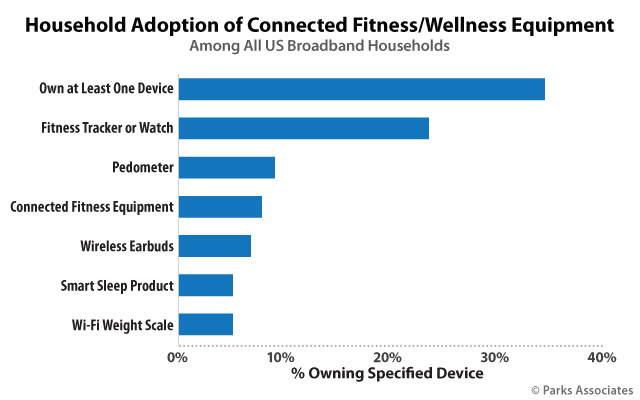The Rise of Fitness and Wellness Devices
The connected wellness and fitness device market has been on an upswing for the past 18 months. Smart watches and fitness trackers, led by Apple and Fitbit, have begun their journey to mass adoption; while connected fitness equipment company Peloton has emerged as a streaming content powerhouse – showing the potential of new business models and new methods of engaging with consumers.
The outbreak of COVID-19 has had a significant impact on the fitness and wellness market – due to social distancing and shelter in place orders, and with many gyms closed, a large percentage of consumers have been looking for alternative workout solutions. Between Q1 2019 and Q1 2020, intention to purchase a smart watch rose from 13% of US BB Hhs to 20% of US BB Hhs.

Over the past several years we’ve seen new innovations in technology that have ignited the imaginations of many, with consumer wellness devices increasingly encroaching into the medical space by monitoring an increasing number of vital signs. The most notable additions to date including high and low heart rate notifications, EKG detection of abnormal heart rhythms, and blood pressure monitoring. With an ongoing pandemic situation, the ability to track these metrics and be notified in the case of abnormalities may be extremely valuable to many.
Tech giants in the consumer space are also beginning to make inroads into the medical market via engaging with the medical research community, seeking FDA regulatory clearance of their devices, and by partnering with health systems, employers, and insurers to offer their devices to consumers. COVID-19 has accelerated many emerging solutions in the healthcare space, especially use and familiarity of telehealth services, and we anticipate increased use of medical devices in the short and near team, ultimately leading towards long-term increased usage.
As consumers integrate connected devices and services ever more deeply into their lifestyles, they bring the same expectation and desire to their health and wellbeing. We anticipate more changes to come in 2020 as consumers adapt to being at home more, consider new ways to exercise as a result off limited gym time, and pay closer attention to medical issues.
Parks Associates' Connected Health at Home: Wellness & Fitness quantifies the adoption and use of consumer wearables and other connected fitness devices and evaluates consumer usage patterns and desire for new features.
Kristen Hanich, Senior Analyst, Parks Associates
Kristen specializes in bridging the gap between data-driven and narrative approaches to understanding the consumer markets via a mix of qualitative and quantitative research approaches. She has dual master's degrees in applied anthropology and public health from the Universities of North Texas in Denton and Fort Worth. She earned her BSc in health at the University of Texas at San Antonio and has a graduate certificate in Geographic Information Systems.
Next: People Power Company - COVID-19 and Telehealth Solutions
Previous: Best Buy Health - COVID-19 Impact on Healthcare Tech
Comments
-
Be the first to leave a comment.
Post a Comment
Have a comment? Login or create an account to start a discussion.


